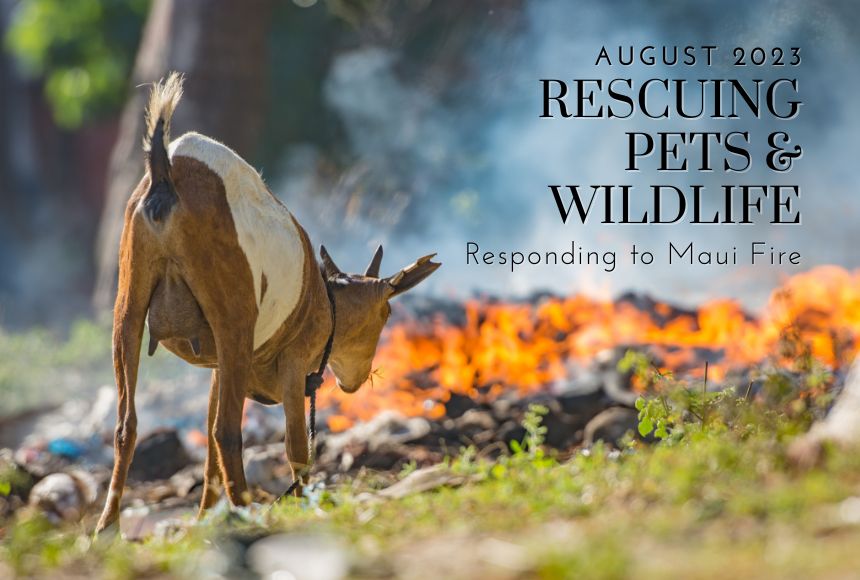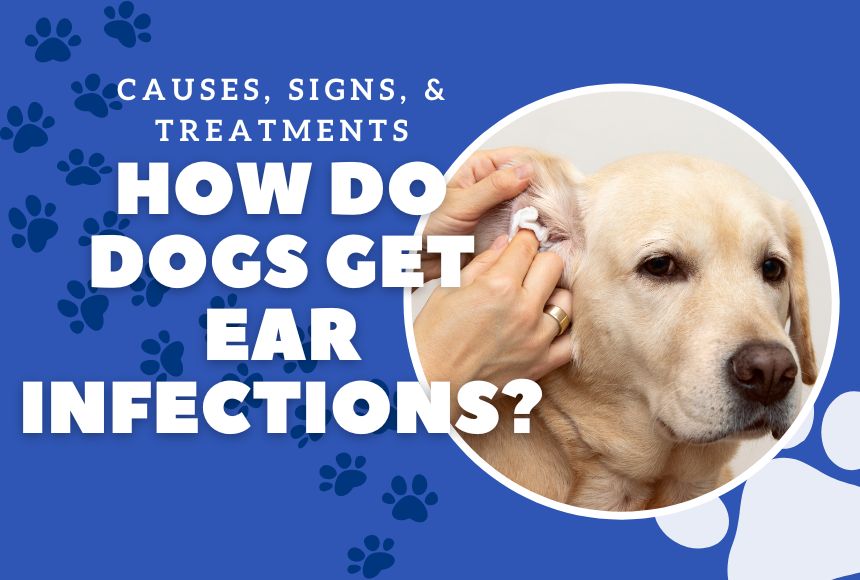The wildfire in Maui, Hawaii, that occurred on August 8 touched the hearts of people all over the world. Fortunately, the fire was completely under control on the 12th, according to the notification from the Maui County government.
Before discussing today's topic, I'd like to say goodbye to the people and animals who have died on the island.
We can't use the time machine to return to a time before the disaster happened. We should help clean up after the disaster and use our little power to help the people around us and save the animals that live on this land with us.
Today, we will talk about how to save and help pets in danger, like in the Maui fire. Please let us know if you have any ideas in the comments.
How to Rescue and Help Pets after a Fire
Here are some general steps you might take to save pets after a fire and help them. Always put your own safety and the safety of others first when trying to help. If you can, talk to emergency workers and other experts who have dealt with similar situations before. What you could do is:
Preparations for further rescue:
- ● Establish a concentration area: Get together with your friends and neighbors in a safe place away from the fire until rescue workers come. People from nearby towns and animals that aren't dangerous can also come here.
- ● Contact authorities: Call emergency services to inform them about the situation. They might be able to tell you what the best thing to do is and make sure everyone is safe.
- ● Division of labor: If you are temporarily unable to get in touch with the emergency services. Don't worry; talk to the people you're with about how to divide up the work. For example:
- ● Someone to register people and animals coming to the concentration area;
- ● Someone to collect supplies (water, food, warm clothing, etc.);
- ● People with medical knowledge may be responsible for simple treatment;
- ● Someone responsible for search and rescue (ensure your safety first).
An efficient division of labor can avoid a lot of unnecessary trouble. Not only can you ensure your safety and physical condition before the rescue organization arrives, but you can also ensure that more rescue forces are involved in the fire rescue.
- ● Ensure your safety first: Before you try to help, make sure the fire is out, and the place is safe to enter. Do not go into the area quickly if there is still a chance of fire, smoke, or damage to the building.
Rescuing and caring for pets after a fire
- ● Be careful: After a fire, pets may be scared and confused, which can make them hard to predict. Slowly and carefully approach them and use a soothing voice to help them stay calm.
- ● Be careful during reunions: Even if your pet seems fine, be careful during meetings. Stress and breathing in smoke could hurt their health. If they are hurt or having trouble breathing, it is important to get them to a doctor as soon as possible.
- ● Leash or shelter: If you can, use a leash, a cage, or something else to keep your pet safe. In a chaotic scenario, they won't be able to run away or get into danger.
- ● Monitor for signs of distress: Fires can be scary and traumatic for pets. Keep an eye out for signs of worry, strange behavior, trouble breathing, or an injury. If you notice anything wrong, you should call the doctor right away.
- ● Check for ID tags and microchips: If you see other pets in the area, look at their collars to see if they have ID tags or microchips. This can help you find the people who own them.
- ● Contact animal shelters: If you can't find the owner of a pet you saved, call your local animal shelter, rescue group, or animal control. They might be able to help take care of the pet for a short time and find its owner.
- ● Notify pet owners: If you are able to save a pet, you should let the pet's owner know. This will make people feel better and stop other people from going to the area to look for them.
How to Rescue and Help Wild Animals after a Fire
Rescuing a wild animal might be a challenge and a little bit dangerous. But if you have any spare energy, try it while ensuring your safety. I'd like to show you some rescue guidelines that should be considered first without professional guidance:
What wild animals can you rescue?
When worried, most wild animals act in ways that are hard to predict, and some of them may hurt people. So, you should first think about animals that are small and not too dangerous, such as:
- ● Small mammals: squirrels, rabbits, and opossums may be easier to rescue. Use gloves or clothes to handle them, and place them in a well-ventilated box with air holes.
- ● Birds: If you find an injured bird, especially a chick or fledgling, you may be able to help them. Gently pick up the bird with a cloth or towel and place it in a safe, well-ventilated container.
- ● Reptiles and amphibians: If you come across turtles, frogs, or other reptiles and amphibians, you may want to consider rescuing them if you can handle them safely. Please be careful, as some species may be poisonous or aggressive.
- ● Herbivore pups: such as tame cattle, foster, and deer, these abandoned animal pups can also be rescued. Remember where you meet them, as their parents may return to this place. Of course, contacting a professional to direct the rescue effort would be nicer.
We do not recommend unauthorized rescue actions for other wildlife, such as foxes, wolves, bears, or other dangerous animals, even if they are cubs, without permission. Remember where they are, take pictures if you can, and call for help from a professional.
What should you do after encountering the wildlife above?
You can do a few general things if you have the chance to save wildlife. Remember, the actions you take will depend on the type of animal, where you are, and what resources you have.
- ● Assessing the situation: Assess the condition of the animal. Is it injured, scared, or in immediate danger? Assess whether you can provide immediate help or whether you need to seek professional help.
- ● Containment: Place the animal in a safe, well-ventilated container. Use gloves, cloths, or towels to handle the animal to avoid direct contact and minimize stress.
- ● Provide warmth and quiet: Place the rescued animal in a warm, quiet, and dark environment. It can help reduce stress and promote recovery.
- ● Limit human interaction: Wild animals may be stressed by the presence of humans, so minimize interaction. Handle the animal carefully only when necessary.
- ● Hydration and Nutrition: If you are rescuing small mammals, birds, or young animals, you may need to provide water and proper food. However, avoid feeding them without proper guidance from a wildlife professional, as their dietary needs may be specific and critical.
- ● Contact a wildlife professional: contact your local wildlife rehabilitation center, animal control agency, or wildlife specialist. They can guide how to care for the animal and whether it needs to be taken to a specialized facility for treatment and rehabilitation.
- ● Avoid overexertion: If the animal is injured, avoid unnecessary movement or handling that may worsen its condition. Remain as calm and stress-free as possible.
- ● Leave the animal alone: while it may be tempting to check on the animal frequently, limit your interactions to reduce stress. Observe from a distance and let the professionals take over.
- ● Record and report: record the encounter, including location, time, and any observations about the animal's behavior and condition. This information is helpful to wildlife experts.
- ● Release or transfer: Once the animal has been properly cared for and rehabilitated, it can be released back into the wild. Alternatively, some animals may need to be transferred to a specialized facility for long-term care.
Pray for the Living in the Fire
Today, we talked about general ways to save pets and wildlife after a fire. We'd love to hear your own ideas in the comments. Together, we can keep getting smarter.






